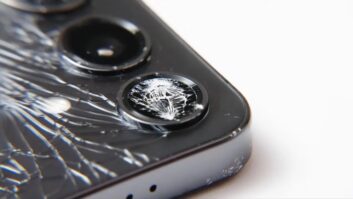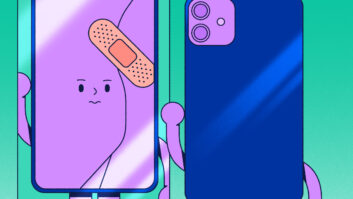Toshiba will offer a full line of fully integrated HDTV sets later in 2003, vowed Toshiba marketing VP Scott Ramirez at his company’s press conference here.
Ramirez said Toshiba expects the demand for fully integrated HDTV sets to rise dramatically in 2003 as a result of expanded DTV programming, and the resolution of cable interoperability agreements that will clear the way for more cable HDTV carriage.
Although details will be announced at its May dealer show, Ramirez said Toshiba plans to offer lines of fully integrated sets in both its TheaterWide HDTV Series and its Cinema Series HDTV series. All models will have both 8-VSB terrestrial and QAM cable digital tuners, and both IEEE-1394 and HDMI digital interfaces.
“We will keep our recording capability and we will keep our future-proof nature,” declared Ramirez in announcing the plans to add both interfaces to the new sets.
Reviewing other DTV developments, Ramirez reported industry Digital TV sales from January to November 2002 reached 2.17 million units. Breaking that down, direct view was 460,000, flat-panel TV was 150,000 and projection TV was 1.55 million, or nearly 72 percent of all DTV sales, Ramirez said.
Keeping with that trend, Toshiba delivered in December what it calls one of the industry’s best digital rear-projection televisions — the 57HLX82. The three-chip LCoS rear-projection HDTV monitor offers up 1,080p resolution capability.
In flat-panel, the company will offer seven new screen sizes in 2003, Ramirez said, including both plasma and LCD models and 16:9 HDTV, 16:9 EDTV and 4:3 EDTV formats.
In future product concepts, Toshiba showed at its booth an 802.11b wireless-enabled flat-panel TV that when used with a wireless transmitter will receive programming anywhere in the home from a central source without using wires. Another future product on display at the booth is an Organic Electro Luminescent (OEL) small-screen flat-panel TV that promises a self-illuminating display, low power consumption, ultra-thin screen depth, higher resolution and a wider viewing angle than today’s flat-panel TV technologies.
Meanwhile, he said the Toshiba/Canon-developed surface conduction electron emitter display (SED) flat-panel technology they have been working on for several years “will be shipping to the United States in 2004.” Ramirez said SED is “the future of large-screen flat-panel TV” due to its combined benefits of a direct-view CRT TV with the form factor of a plasma panel.
“A regular CRT has a front face of phosphors, and a single electron emitter that scans those phosphors. An SED has similar phosphors on the front face, but it adds a grid of emitters — one emitter for each pixel. So, it has a four-inch form factor like an LCD panel, but all the benefits of a CRT — brightness, color gradation, and no problem with dead pockets, altitude or tipping,” he said.






